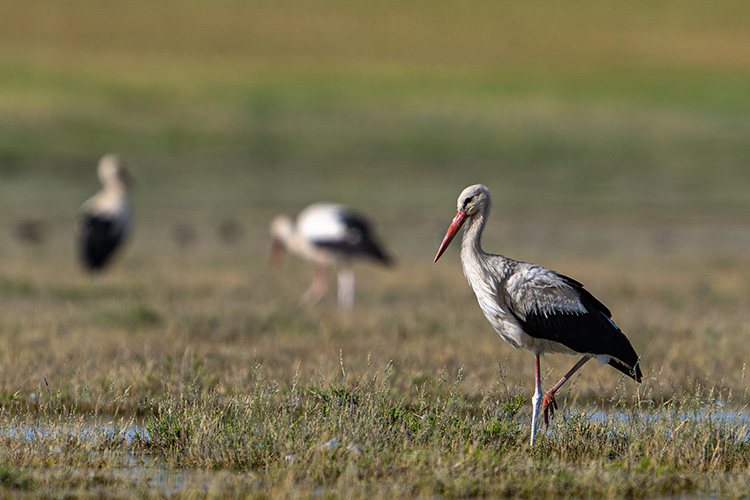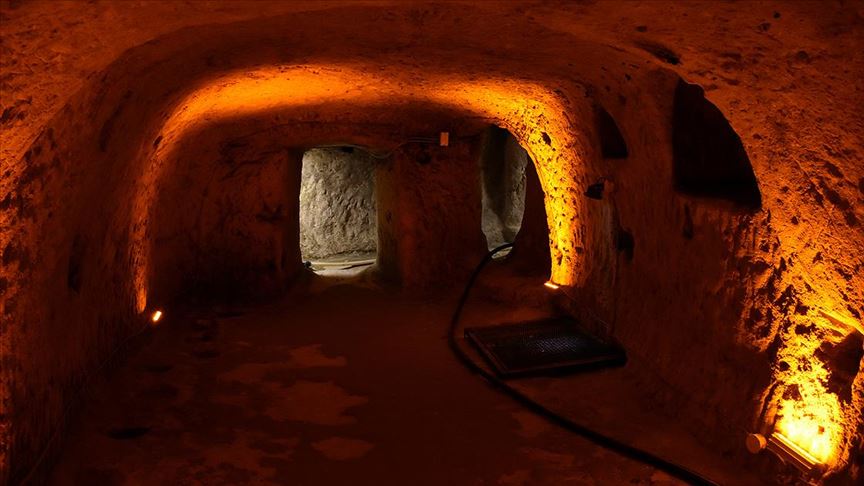Mucur is a district in the Central Anatolia Region of Türkiye affiliated with the province of Kırşehir. Situated at an elevation of 1,100 meters above sea level, the district covers an area of 1,088 km². As of 2024, the total population of Mucur is 19,445. Located 23 kilometers from the city center of Kırşehir, Mucur stands out with its historical heritage and natural richness.
History
The history of Mucur dates back to the Bronze Age, according to archaeological findings in the region. Caves found in and around the district indicate that human settlement has existed in the area since ancient times. The region, once under the control of civilizations such as the Hittites, Phrygians, and Persians, later came under the rule of the Kingdom of Cappadocia following Alexander the Great’s conquest of Anatolia, and subsequently passed into Roman and Byzantine control.
After the Battle of Manzikert in 1071, the lands of Mucur and Kırşehir came under the rule of the Seljuk Turks. During the Turkification of Anatolia, Mucur became a destination for waves of migration and emerged as a part of cultural development in the 13th century. It is known that Hacı Bektaş Veli had influence in the area. After the Mongol invasion, the region came under the control of the Eretnaids and later Kadı Burhaneddin Ahmed. This period was shaped by power struggles between the Ottomans and the Karamanids. After the Battle of Ankara, Timur handed the region to the Karamanids, and thus Mucur came under their control. However, with the victory of Mehmed I (Çelebi Mehmed), it was incorporated into the Ottoman realm.
In the 16th and 17th centuries, the region experienced significant lawlessness due to the Celali revolts. At that time, Mucur was considered one of the "palanga" or fortified villages. Throughout the 17th century, it was a site of activity for various rebels and bandit groups. Although direct political information for the 18th and 19th centuries is limited, it is known that Mucur developed during this time and became a district center. During the Turkish War of Independence, the people of Mucur were also active in the national struggle, and on December 22, 1919, Mustafa Kemal Pasha was welcomed by the locals during his visit to the district.
Etymology of the Name
There are various theories about the origin of the name “Mucur,” based on both folklore and linguistic analysis. According to one legend, the name derives from “Mücürüm,” the leader of the local non-Muslim community. In Ahmed Vefik Pasha’s dictionary “Lehçe-i Osmaniye,” the word “mucur” refers to burnt iron slag or debris. In Ottoman tax records (tahrir defterleri), the name appears as “bücür” or “bucur.” It is believed that the current form “Mucur” evolved over time due to changes in pronunciation.
Geography
Mucur is located between 39°04' north latitude and 34°22' east longitude, southeast of Kırşehir. In the northwest, extensions of the Kırşehir massif can be found, while large parts of the district contain formations from the Tertiary period. There are clay and sand deposits along stream beds, and travertine formations in the Acıöz neighborhood. Streams such as Ulusu, Aflaközü, and Acıöz, along with seasonal brooks, create various landforms on the plateau terrain. The area around Lake Seyfe is notably flat. The highest elevations in the district are Armutlu Hill (1,557 m), Köpekli Mountain (1,554 m), and Kırlangıç Hill (1,472 m).
Economy
The economy of Mucur is largely based on agriculture. Wheat, barley, sunflower, lentils, and sugar beet are the main crops. Out of 788,100 decares of farmland, 27,904 decares are irrigable. Livestock farming, including cattle and sheep, is another major source of livelihood. In 2004, the district had 8,380 cattle, 8,550 sheep and goats, and 10,750 poultry. Projects have promoted the cultivation of forage crops such as vetch, Hungarian vetch, and silage corn. There are also initiatives supporting greenhouse farming and sheep breeding, alongside social support programs. The district hosts an industrial zone with 142 shops, five flour mills, and one marble factory. Branches of Ziraat Bank and Halk Bank also serve the area.
Administrative Structure
The district center of Mucur consists of seven neighborhoods. Among them, Acıöz and Şatıroğlu are located 5 km from the center. Mucur has 44 affiliated villages, most of which follow a clustered settlement pattern. Historically, systems of tribal leadership or religious authority (aghalık or şeyhlik) were not prevalent in the region.
Culture and Tourism
Lake Seyfe and Bird Sanctuary
Lake Seyfe is a natural lake located about 16 kilometers from Mucur’s district center and is one of the most important wetlands in Central Anatolia. Spanning 10,700 hectares, it is also an internationally recognized bird sanctuary and listed as a Ramsar Site requiring protection.
The lake consists of reed beds, marshes, and saline water ecosystems. Its most notable feature is that it hosts thousands of bird species throughout the year. During the autumn migration season, over 480,000 birds have been observed. The lake is home to 187 different bird species, especially flamingos, making it one of the few places where large groups of flamingos reside. At peak times, up to 320,000 flamingos have been counted. Lake Seyfe is a significant attraction not only for birdwatchers but also for nature lovers due to its biodiversity and scenic beauty. However, climate change, declining water resources, and environmental pressures pose serious threats to its ecological balance. As such, it is a sensitive natural heritage area requiring both protection and responsible tourism.

Lake Seyfe and Bird Sanctuary (Anadolu Agency)
Mucur Underground City
Located within the Hamidiye neighborhood in the district center, Mucur Underground City was carved into volcanic tuff rock. Dating back to the Early Christian period, approximately the 4th and 5th centuries AD, the city served as a refuge for Christians seeking shelter from invasions and attacks. It features a multi-level structure, with some sections arranged in two or three stories. Living quarters, granaries, places of worship, food storage rooms, and shelters are interconnected by narrow corridors and passages. One of the most striking elements is the presence of large rolling stone doors used to block entrances in times of danger. Ventilation shafts were also carefully constructed to support life underground. Today, the Mucur Underground City is an important historical and touristic site that reflects the faith and survival strategies of early Christian communities.

Mucur Underground City (Anadolu Agency)
Aflak Baba Tomb
This Seljuk-era tomb, built from cut stone, is located in the village of Altınyazı. Notable natural and archaeological sites in the district include the underground cities of Karacalı and Kepez, the caves of Solaklı and Aksaklı, and Obruk Lake.


